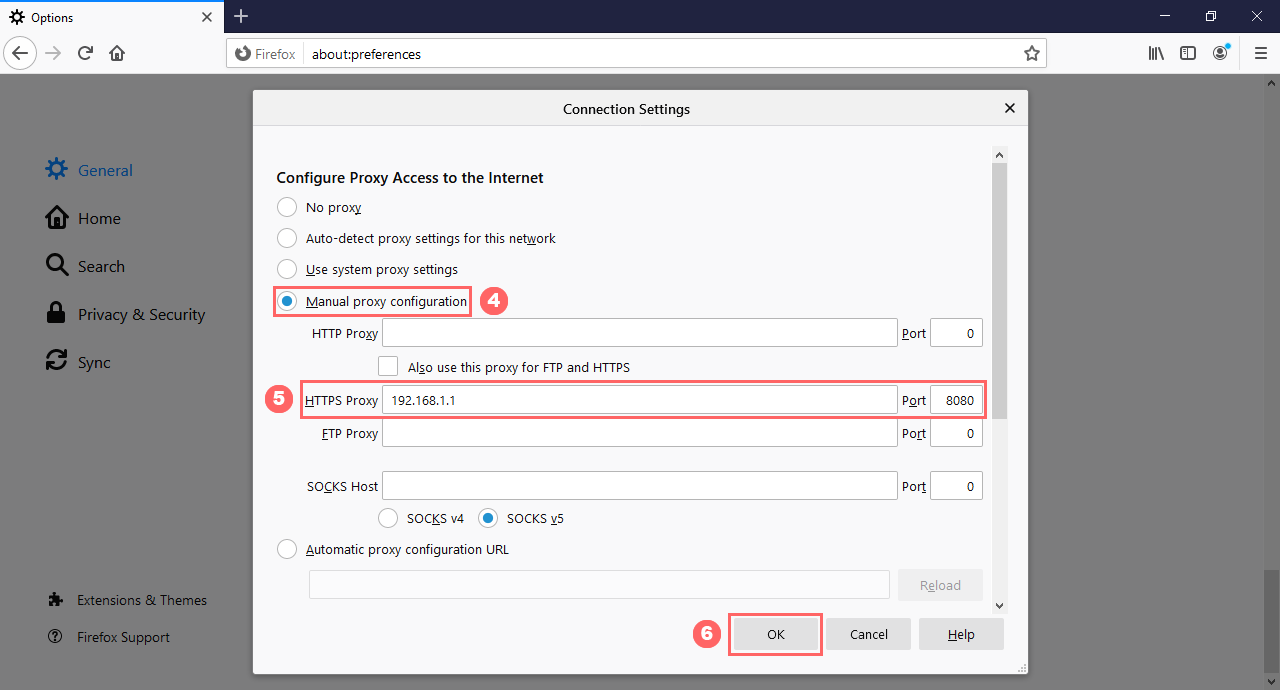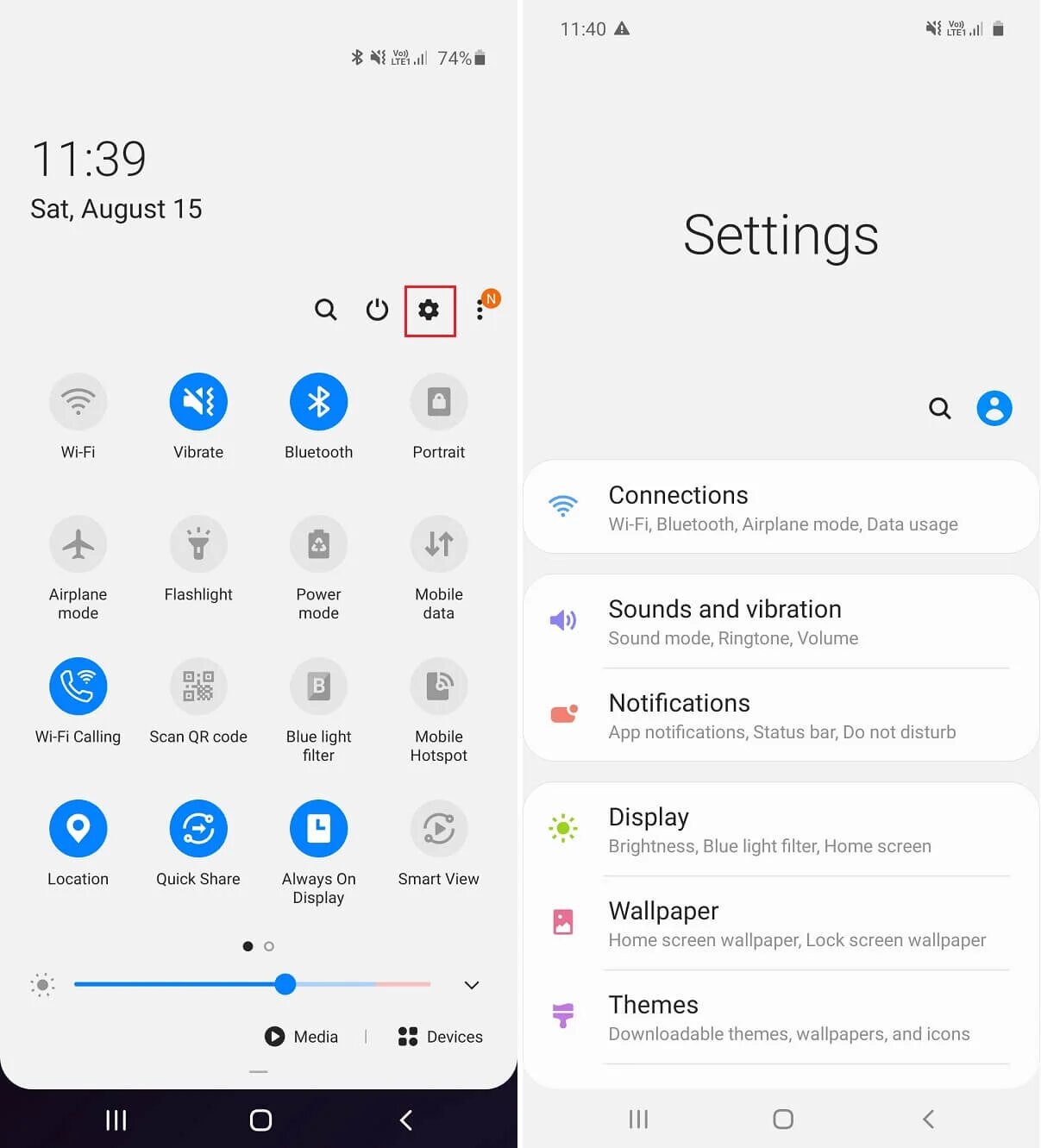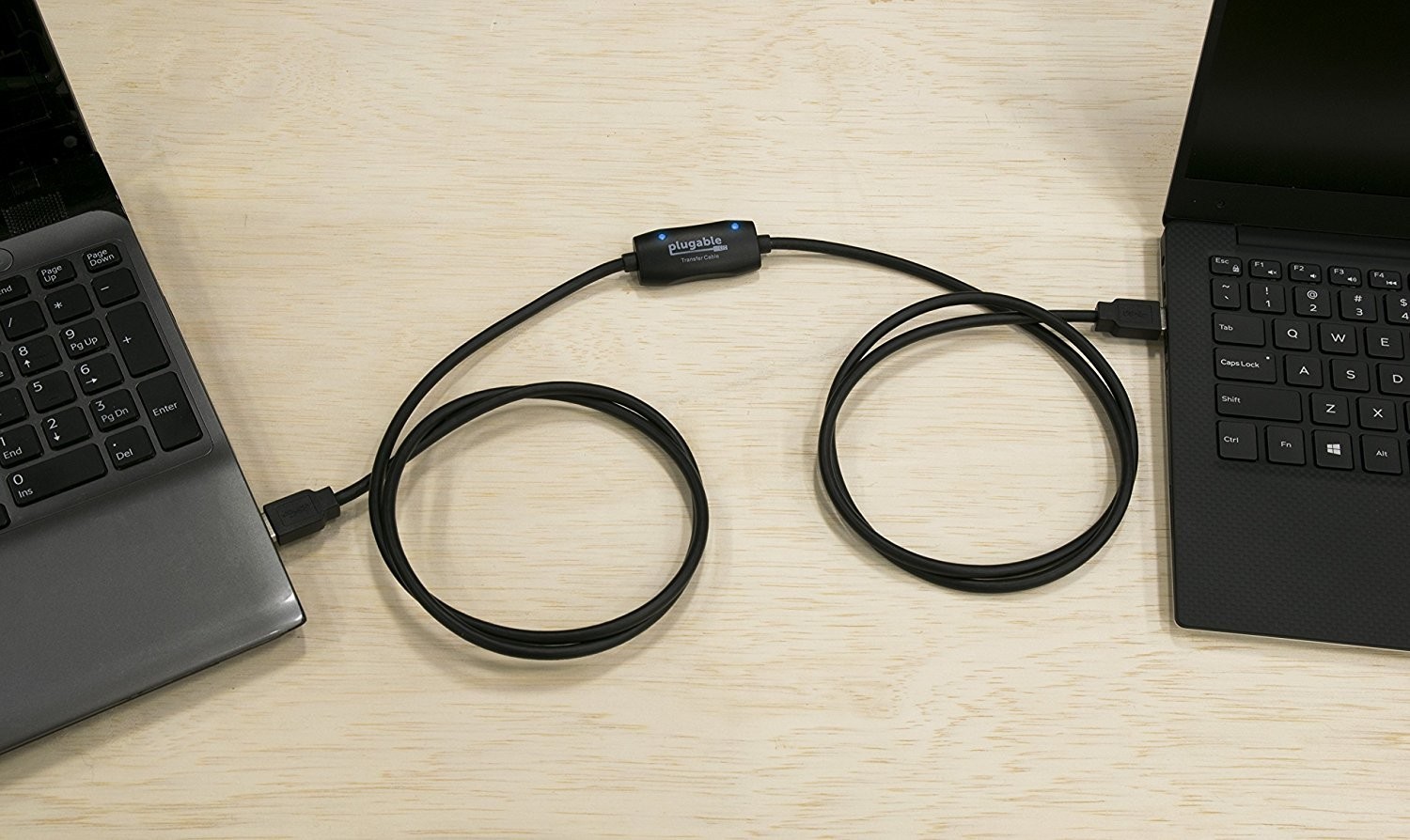Introduction
A proxy server is an intermediary between your device and the internet. It acts as a gateway, forwarding requests from your device to websites and returning the responses back to you. One of the main benefits of using a proxy server is that it enhances your online privacy and security by masking your IP address and encrypting your internet traffic.
While there are numerous proxy services available online, they often come with limitations or require a subscription fee. If you’re looking for more control and flexibility, making your own proxy server is a great option. By setting up your own proxy server, you have full control over its configuration, access, and security.
In this article, we will guide you through the process of making your own proxy server. We will explore the reasons why you might want to create your own proxy server, the requirements for setting it up, and the step-by-step procedure to get you started. Whether you want to access geo-restricted content, improve your online privacy, or speed up your internet connection, having your own proxy server can be a valuable tool.
Before we dive into the details, it’s important to note that creating a proxy server requires some technical knowledge and understanding of networking concepts. If you’re not familiar with these concepts, don’t worry – we will break down the process into simple steps that anyone can follow.
What is a Proxy Server?
A proxy server is an intermediary server that sits between your device and the internet. When you connect to the internet through a proxy server, it acts as a gateway, forwarding your requests to websites and retrieving the responses on your behalf. Essentially, it acts as a middleman in the communication between your device and the websites you visit.
Proxy servers have multiple functions and can serve various purposes. One of the primary functions of a proxy server is to improve privacy and security. When you access the internet through a proxy server, your IP address is masked, making it difficult for websites to track your online activities. This can be particularly useful when you want to keep your browsing habits and personal information private.
Another benefit of using a proxy server is the ability to bypass restrictions and censorship. Some websites and online services may be blocked or restricted based on your location, but by connecting through a proxy server, you can appear as if you are accessing the internet from a different location. This allows you to bypass geographic restrictions and access content that may otherwise be unavailable.
Proxy servers also play a crucial role in improving network performance. By caching web pages and files, proxy servers can reduce the amount of data that needs to be transferred between your device and the website. This can result in faster loading times and improved overall browsing experience.
Additionally, proxy servers can be used to filter and control internet access in organizations. By implementing content filtering and access control policies, proxy servers allow administrators to restrict access to certain websites or types of content, ensuring that employees or users adhere to the organization’s internet usage policies.
Overall, a proxy server acts as a versatile tool that offers privacy, security, and performance benefits. Whether you’re concerned about online privacy, need to bypass restrictions, or want to optimize your network performance, utilizing a proxy server can be a valuable solution.
Why Should You Make Your Own Proxy Server?
While there are plenty of proxy services available online, making your own proxy server offers a range of benefits and advantages. Here are some compelling reasons why you should consider creating your own proxy server:
1. Control and Customization:
By creating your own proxy server, you have full control over its configuration, access policies, and security measures. You can customize the server to meet your specific needs and requirements, tailoring it to suit your preferences.
2. Enhanced Privacy and Security:
When you use a commercial proxy service, you’re trusting that they will handle your data securely. By setting up your own proxy server, you can ensure that your online activities remain private and secure. You have complete control over the server and can implement robust security measures to protect your data.
3. Bypassing Restrictions:
If you’re facing geographic restrictions or censorship, having your own proxy server can be a powerful tool. By connecting through your proxy server, you can bypass these restrictions and access content that may be blocked in your location.
4. Improved Network Performance:
A self-hosted proxy server can enhance your network’s performance by caching frequently accessed web pages and files. This reduces the amount of data that needs to be transferred, resulting in faster load times and reduced bandwidth usage.
5. Cost Savings:
While commercial proxy services often come with a subscription fee, creating your own proxy server can save you money in the long run. Once set up, there are no additional costs, and you can enjoy the benefits of a proxy server without any recurring expenses.
6. Learning Opportunity:
Setting up your own proxy server offers a valuable learning experience. It allows you to explore and gain a deeper understanding of networking concepts, server administration, and security practices.
By making your own proxy server, you gain greater control, improved privacy and security, and the ability to bypass restrictions. Additionally, it can provide cost savings and a valuable learning opportunity. If you’re comfortable with the technical aspects involved, creating your own proxy server can be a rewarding endeavor.
Requirements for Making a Proxy Server
Before diving into the process of creating a proxy server, it’s important to ensure that you have the necessary requirements in place. Here are the key components you’ll need:
1. Hardware or Cloud Server:
First and foremost, you’ll need a server to host your proxy server. This can either be a physical server or a cloud-based server. If you opt for a physical server, make sure it has enough resources to handle the expected traffic. Alternatively, you can choose a cloud server provider that offers scalable resources based on your needs.
2. Suitable Operating System:
You’ll need to choose an operating system (OS) for your server. Popular options include Linux distributions like Ubuntu, CentOS, or Debian. These operating systems are well-suited for server environments and offer a wide range of compatibility and customization options.
3. Proxy Server Software:
To create a proxy server, you’ll need to install proxy server software on your chosen OS. There are several options available, such as Squid, Nginx, or Apache. Choose the software that best fits your needs in terms of performance, features, and ease of configuration.
4. Basic Networking Knowledge:
A basic understanding of networking concepts is essential when setting up a proxy server. You should be familiar with concepts like IP addresses, port numbers, and network protocols. Additionally, knowledge of firewall configuration and routing can be beneficial.
5. Encryption and Security Measures:
Depending on your requirements, you may want to implement encryption and security measures on your proxy server. This can involve setting up SSL/TLS certificates for secure connections, implementing access controls, and regularly updating and patching your server’s software.
By ensuring that you have the necessary hardware or cloud server, a suitable operating system, proxy server software, basic networking knowledge, and adequate security measures, you’ll be well-prepared to create your own proxy server. These requirements provide a solid foundation for a secure, reliable, and customized proxy server that meets your specific needs.
Step 1: Choose a Suitable Operating System
Choosing the right operating system (OS) is a critical step in setting up your own proxy server. The OS you select will determine the compatibility, stability, and performance of your proxy server. Here are some factors to consider when choosing an OS:
1. Linux Distributions:
Linux is a popular choice for hosting proxy servers due to its stability, security, and wide support for various proxy server software options. Some recommended Linux distributions for proxy servers include Ubuntu, CentOS, and Debian. These distributions offer robust package managers, regular updates, and extensive online documentation, making it easier to install and configure proxy server software.
2. Windows Server:
If you’re more comfortable with a Windows environment or have specific software requirements that are better suited for Windows-based systems, you can opt for a Windows Server OS. Windows Server provides a user-friendly interface and robust administrative tools. However, it’s important to note that some proxy server software options may have limited support or compatibility on Windows.
3. Resource Requirements:
Consider the hardware resources available on the server you’ll be using. Linux distributions generally have lower resource requirements compared to Windows Server, making them a more efficient choice. However, ensure that the selected OS can handle the expected traffic volume and server workload to ensure smooth operation of the proxy server.
4. Community Support:
Check the availability of online support and community resources for the chosen OS. Having access to active online forums, documentation, and tutorials can be invaluable when troubleshooting issues and learning how to optimize your proxy server.
5. Security and Updates:
Consider the OS’s security features and the frequency of updates. Regular security patches and updates are crucial for maintaining the security of your proxy server and protecting your data. Linux distributions often excel in this area, as they have dedicated security teams and active communities that provide timely updates.
Ultimately, the choice of operating system for your proxy server depends on your familiarity, technical requirements, and specific preferences. Linux distributions offer stability, security, and compatibility with a wide range of proxy server software, while Windows Server provides a user-friendly interface and seamless integration with Windows-based systems.
Make an informed decision based on the requirements of your proxy server and your own level of comfort and expertise with the chosen operating system. Once you have selected the suitable OS, you’re ready to move on to the next step of setting up your own proxy server.
Step 2: Set Up a Server
Setting up a server is a crucial step in creating your own proxy server. The server will act as the hardware or cloud-based infrastructure that hosts your proxy software. Here are the key steps to set up a server:
1. Choose a Hosting Option:
Decide whether you want to set up your proxy server on a physical hardware server or utilize a cloud-based hosting service. Virtual Private Servers (VPS) and cloud platforms like Amazon Web Services (AWS), Google Cloud, or Microsoft Azure offer scalable options with high flexibility. Evaluate your needs in terms of resources, scalability, and budget to choose the most suitable hosting option.
2. Provision the Server:
If you opt for a physical server, install the chosen operating system (OS) following the specific installation instructions provided by the OS vendor. For cloud platforms, choose the appropriate virtual machine and OS image and follow the setup instructions provided by the hosting provider. Ensure that the server specifications meet the requirements for your proxy server and allocate sufficient resources.
3. Security Measures:
Implement security measures on your server to protect it from external threats. This includes configuring a firewall to allow only necessary network traffic, enabling secure remote access (SSH), disabling unnecessary services, and setting up strong passwords for user accounts. Regularly update the server’s software, including the OS and security patches, to maintain a secure environment.
4. Network Configuration:
Configure network settings on the server to ensure connectivity and proper communication. This includes assigning a static IP address or configuring Dynamic Host Configuration Protocol (DHCP) if applicable. Additionally, set up port forwarding if your server is behind a router or firewall to allow incoming connections to the proxy server.
5. Server Monitoring:
Choose a server monitoring solution to keep an eye on the health and performance of your server. Monitoring tools can provide valuable insights into resource usage, network traffic, and potential issues. Configure alerts to be notified of any server-related problems promptly.
By following these steps, you can properly set up your server to ensure a stable and secure environment for your proxy server. Whether you’re utilizing a physical server or a cloud-based hosting service, it’s important to allocate sufficient resources, implement security measures, configure network settings, and monitor the server’s performance. Once the server setup is complete, you’re ready to proceed with installing and configuring the proxy server software in the next step.
Step 3: Install a Proxy Server Software
Installing a proxy server software is a crucial step in creating your own proxy server. This software will act as the intermediary between your device and the internet, handling requests and forwarding responses on your behalf. Here’s how you can install a proxy server software:
1. Research Available Proxy Server Software:
Start by researching and evaluating the available proxy server software options. Popular choices include Squid, Nginx, and Apache. Consider factors such as performance, stability, security, and community support when making your decision. Read documentation, user reviews, and online forums to gather information about the different software and their suitability for your needs.
2. Choose the Proxy Server Software:
Based on your research, choose the proxy server software that best fits your requirements. Consider factors such as ease of installation, configuration options, and compatibility with your chosen operating system. Ensure that the software is actively maintained and has proper documentation available for reference.
3. Install the Proxy Server Software:
Follow the installation instructions provided by the proxy server software documentation. Depending on the software and your chosen operating system, installation methods may vary. Typically, installation involves using package managers or running executable files. Make sure you have administrative access to the server to install the software successfully.
4. Configure Proxy Server:
After the successful installation, proceed with the configuration of the proxy server software. This involves specifying settings such as port numbers, access control rules, caching options, and logging preferences. The configuration process will depend on the chosen software and your specific requirements. Refer to the software documentation for detailed configuration instructions.
5. Test Proxy Server:
Once the proxy server is configured, it’s important to test its functionality. Ensure that the server is running properly and able to handle requests from your device. Test it by configuring your device’s network settings to use the proxy server, and try accessing various websites to check if the proxy is successfully forwarding the requests.
By following these steps, you can successfully install and configure a proxy server software. Remember to research available options, choose a suitable software, follow installation instructions, configure the proxy server settings, and thoroughly test its functionality. The proxy server software acts as the core component of your proxy server, enabling it to efficiently handle requests and ensure a secure and optimized browsing experience.
Step 4: Configure Proxy Server Settings
Configuring the settings of your proxy server is an important step in ensuring that it operates efficiently and meets your specific requirements. This step involves adjusting various parameters and options to optimize the performance and security of your proxy server. Here’s how you can configure the proxy server settings:
1. Port Configuration:
Select the port on which your proxy server will listen for incoming connections. Ensure that the chosen port is not used by any other service and is allowed through your server’s firewall. The common ports used for proxy servers include 8080 and 3128, but you can choose any available port.
2. Access Control:
Decide whether you want to implement access control measures on your proxy server. This allows you to restrict access to specific IP addresses or IP ranges, ensuring that only authorized clients can use your proxy. Consider whether you want to allow anonymous access or require authentication for users to connect to your proxy server.
3. Logging and Monitoring:
Determine the level of logging and monitoring you require for your proxy server. Logging helps track usage, identify potential security threats, and troubleshoot any issues. Decide the type of information you want to log, the log file location, and the log rotation policy. Additionally, consider implementing monitoring tools to keep an eye on the server’s performance and maintain optimal operation.
4. Caching Options:
Many proxy server software options offer caching capabilities to improve performance. Configure the caching settings based on the expected usage patterns of your proxy server. Decide on the cache size, caching algorithms, and expiration policies to ensure that frequently accessed content is stored and served from the cache, reducing the load on your server.
5. SSL/TLS Encryption:
If you require secure connections between your device and the proxy server, consider implementing SSL/TLS encryption. This ensures that the data transmitted between the client and the proxy server is encrypted, providing an additional layer of security. Obtain and configure SSL/TLS certificates to enable secure communication.
6. Load Balancing and High Availability:
For high-demand environments or to ensure redundancy, consider implementing load balancing or high availability options. Load balancing distributes incoming requests across multiple proxy servers, ensuring optimal performance and preventing overload on a single server. High availability configurations allow for failover and seamless operation even if one server fails.
By carefully configuring the settings of your proxy server, you can tailor it to meet your requirements in terms of access control, performance, security, and availability. Consider the specific needs of your environment, review the documentation of your chosen proxy server software, and adjust the settings accordingly. Once the configuration is complete, your proxy server will be ready to handle requests and provide a secure and efficient browsing experience.
Step 5: Test Your Proxy Server Connection
Testing your proxy server connection is a crucial step to ensure that it is functioning correctly and that you can effectively browse the internet through the proxy. This step allows you to verify that your proxy server is properly configured and can handle requests from your device. Here’s how you can test your proxy server connection:
1. Configure Your Device’s Network Settings:
Set up your device to use the proxy server for internet access. This involves configuring the network settings of your device to specify the proxy server’s IP address and port number. The process for configuring network settings can vary depending on the device and operating system being used. Refer to the documentation or online resources for detailed instructions.
2. Access Websites:
Once the network settings are configured, try accessing various websites to check if your requests are being properly handled by the proxy server. You can use a web browser and visit different websites to see if they load correctly. It’s important to test both HTTP and HTTPS websites to verify that secure connections are also functioning properly.
3. Check IP Address:
Verify that your IP address is being masked by the proxy server. There are various online tools available that can display your public IP address. Use these tools to check if the IP address shown matches the IP address of your proxy server instead of your actual device’s IP address. This confirms that your internet traffic is being routed through the proxy server.
4. Test Geo-Restricted Content:
If your intention is to bypass geo-restrictions, test whether the proxy server allows you to access content that is normally unavailable in your location. Try accessing websites or online services that are region-specific or blocked in your area to ensure that the proxy server effectively bypasses the restrictions and allows you to access the desired content.
5. Monitor Performance and Logs:
Observe the performance of your proxy server during testing. Check the server logs and monitor metrics such as response time and resource usage to ensure that the proxy server is operating efficiently. This can help you identify and address any potential issues or bottlenecks that may impact the performance of your proxy server.
By thoroughly testing your proxy server connection, you can verify its functionality, confirm that your IP address is being masked, access geo-restricted content, and monitor its performance. Testing provides the opportunity to troubleshoot any potential issues and ensure that your proxy server is ready for productive use. Once you have successfully completed the testing, you can move forward with securing and monitoring your proxy server in the next step.
Step 6: Secure and Monitor Your Proxy Server
Securing and monitoring your proxy server is crucial to ensure its ongoing stability, reliability, and protection against potential threats. Implementing proper security measures and implementing monitoring tools will help you keep your server secure and perform at its best. Here are the key steps to secure and monitor your proxy server:
1. Update and Patch Regularly:
Keep your proxy server software, operating system, and any other installed components up to date by regularly applying security patches and updates. This helps protect against known vulnerabilities and ensures that you have the latest security features and bug fixes.
2. Implement Access Controls:
Configure access controls to restrict connectivity to your proxy server. Use firewall rules to allow only necessary traffic and block any unauthorized access attempts. Consider implementing measures like IP whitelisting and requiring user authentication to further enhance security.
3. Enable Logging and Log Analysis:
Enable logging in your proxy server to record details of client requests, server responses, and any potential errors or security-related events. Regularly analyze the logs to identify any suspicious activities, emerging patterns, or performance issues. Log analysis can help you detect and respond to security incidents promptly.
4. Monitor Resource Usage:
Monitor your proxy server’s resource usage, including CPU, memory, and network bandwidth. This helps you identify any abnormal resource consumption or performance degradation that may indicate a security incident or performance issue. Utilize monitoring tools to set thresholds and receive alerts when resource utilization exceeds defined limits.
5. SSL/TLS Encryption:
If your proxy server handles sensitive data or if secure communication is required, implement SSL/TLS encryption to protect data in transit. Configure your proxy server to use valid SSL/TLS certificates and enforce secure connections. Regularly update the certificates to maintain strong encryption and security.
6. Regular Backups:
Implement a regular backup strategy to ensure that you have readily available copies of critical server configurations, logs, and any other essential components. Backups help you recover in case of data loss, hardware failures, or security incidents. Store backup copies in secure locations to maintain data integrity.
By securing and monitoring your proxy server, you can proactively protect it from potential threats and ensure its optimal performance. Regularly update and patch software, configure access controls, enable logging, monitor resource usage, implement SSL/TLS encryption, and maintain regular backups. These practices help you maintain the integrity, availability, and confidentiality of your proxy server, contributing to a secure and reliable browsing experience.
Conclusion
Congratulations! You have successfully learned the process of creating your own proxy server. By following the step-by-step guide provided in this article, you can enjoy the benefits of enhanced privacy, bypassing restrictions, improved network performance, and customization that come with having your own proxy server.
Throughout this journey, you understood the importance of selecting a suitable operating system, setting up a server, installing and configuring proxy server software, testing the connection, and securing and monitoring the proxy server. Each step contributes to the overall functionality, security, and performance of your proxy server.
Making your own proxy server gives you full control over configurations and access policies, allowing you to tailor it to your specific needs. You can bypass geographic restrictions, improve your online privacy, and enjoy faster and more efficient browsing.
Remember, though, that creating and managing a proxy server requires ongoing maintenance and monitoring. Regularly updating and patching your software, implementing security measures, and monitoring performance are crucial to ensure the continued reliability and security of your proxy server.
Now that you have the knowledge and technical skills, you can venture into the realm of proxy servers with confidence. Whether for personal use or within an organization, having your own proxy server provides a valuable tool to enhance your online experience and protect your privacy.
So, go ahead and set up your own proxy server. Explore the possibilities, experiment with different configurations, and enjoy the freedom and control that it brings to your online activities.
Happy proxy server creation, and best of luck in all your endeavors!

























